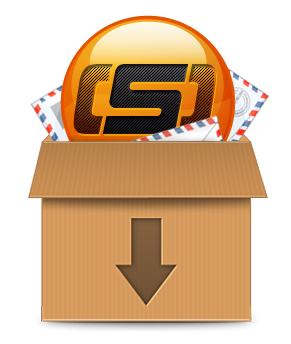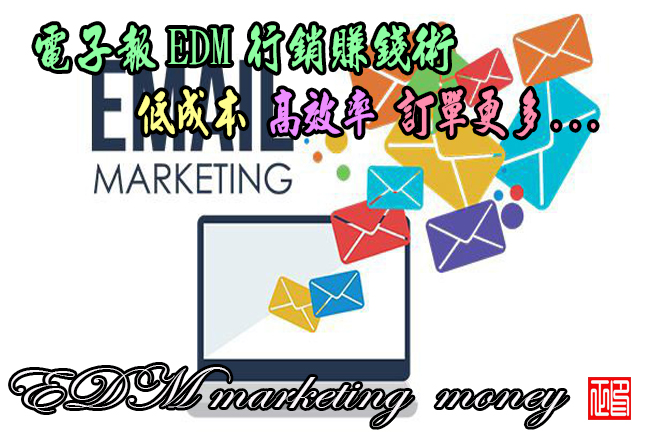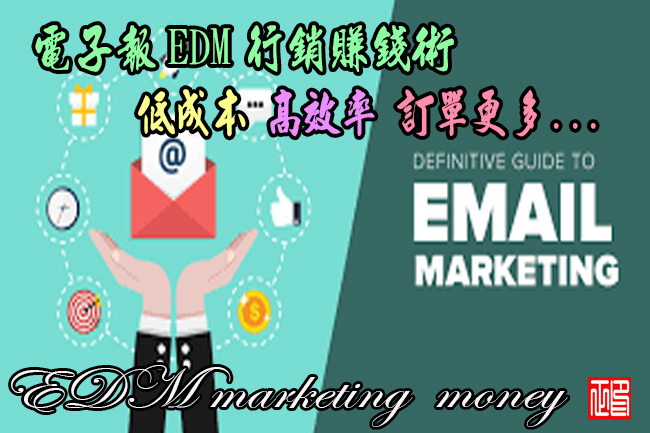使用電子信件行銷比傳統的廣告信件都是有優點和缺點
使用電子信件行銷比傳統的廣告信件都是有優點和缺點
電子信件行銷,直接行銷的商業訊息,一組人使用電子信件。
在其最廣泛的意義上說,每一個電子信件傳送到一個現實或潛在的客戶,可以考慮電子信件行銷。它通常涉及到使用電子信件傳送廣告,請求業務,或招攬出售或捐贈,是為了建立客戶忠誠度,信任,或品牌知名度。電子信件行銷可以做到到冷的清單或現有的客戶資料庫。概括地說,該術語通常用來指:
傳送電子信件的目的是加強其現用的或以前的客戶一個商人的關係,鼓勵顧客的忠誠度和重複業務。
傳送電子信件的目的,取得新客戶,或說服現有的客戶立即購買的東西。
由其他公司為他們的客戶傳送的電子信件中加入廣告。
研究人員估計,美國公司單獨花了1.51美元億美元對電子信件行銷在2011年和到2016年將增長到2.468十億美元。
內容

電子信件行銷可以通過不同類型的電子信件:
事務電子信件
事務性信件通常是觸發的基礎上與公司客戶的行動。觸發的事務性訊息內含下降籃訊息,購買或訂單確認信件和電子信件收據。
一個事務處理的電子信件的主要目的,是關於觸發的動作來傳達訊息。但是,由於其高開率(51.3%相比,36.6%的電子信件通信)事務性信件是一個千載難逢的機會,來吸引客戶,引進或擴大的電子信件與客戶或使用者的關係,預測和回答問題或交叉銷售或追加銷售產品或服務。[ 2 ] [ 不可靠的來源? ]
許多電子信件通信軟體提供者提供的事務性的電子信件支援,使公司的能力,內含促銷的訊息,身體內的事務性信件。也有軟體提供者,提供專業事務的電子信件行銷服務,其中內含提供有針對性的,個性化的事務性信件和運行特定的行銷活動(如客戶轉介計劃)。
直接信件
直接信件內容涉及單獨傳送電子信件來傳達促銷訊息(例如,一個特殊的優惠或產品目錄公告)。公司通常收取客戶或潛在客戶的電子信件位址的清單直接傳送的促銷短信,或是他們還可以租用服務公司的電子信件位址清單。
比較傳統的信件

使用電子信件行銷比傳統的廣告信件都是有優點和缺點。
使用電子信件行銷比傳統的廣告信件優點:
電子信件行銷(網際網路)是流行的企業有以下幾個原因:
一個確切的投資回報率可以被追蹤(「追蹤籃子」),並已被證明是高時處理得當。電子信件行銷經常被報告為第二隻搜尋行銷最有效的線上行銷策略。
電子信件行銷是明顯便宜,速度比傳統的信件,主要是因為成本高,需要在傳統的信件活動生產的藝術品,印刷,尋址和郵寄的時間。
廣告客戶可以達到相當數量的使用者選取(即同意),他們感興趣的科目上接收電子信件通信的電子信件。
幾乎一半的美國網際網路使用者檢查或傳送電子信件在典型的一天,凌晨1點和5之間傳遞的電子信件群發,當地時間上午跑贏那些在其他時間傳送開啟和點擊率。
電子信件是流行的數字行銷,在英國,估計2009年的15%上升到292米英鎊。
使用電子信件行銷比傳統的廣告信件缺點:
合法行銷的電子信件服務公司返回路徑發表的一份報告,截至2008年中期電子信件產能仍然是一個問題。根據該報告,合法的電子信件伺服器的平均分娩率56%,20%的訊息被拒絕,過濾和百分之八。
考慮使用電子信件行銷專案的公司必須確保他們的程式不會違反垃圾信件的法律,如美國的突擊控制非請求的色情和行銷法案(CAN-SPAM),歐洲隱私電子通信條例「2003年,他們的網際網路服務提供商的可接受的使用政策。
選取加入的電子信件廣告
選取加入的電子信件廣告,或許可行銷,是一個通過電子信件收件人廣告已同意接收的廣告模式。幾個行銷人員開發的這種方法是消除電子信件行銷的缺點。
選取加入電子信件行銷可能演變成一種技術,它使用一個傳送者和接收者之間的握手協定。這一系統旨在最終導致高消費者和企業之間的滿意度。如果選取電子信件廣告時,將材料通過電子信件傳送給消費者的「預期」。據推測,消費者願意接受它,這使得它不同於傳送到消費者的不請自來的廣告。在理想的情況下,選取加入的電子信件廣告將更加個性化和關聯的消費者比不關聯的廣告。
許可行銷的一個常見的例子是一家廣告公司的客戶傳送簡訊。這樣的訊息知會客戶即將進行的活動或促銷,或新產品。在這種類型的廣告,該公司要傳送簡訊給他們的客戶可能會問,他們在購買點,如果他們希望收到的簡訊。
選取聯繫人訊息存儲在他們的資料庫中的基礎,行銷人員可以傳送自動滴灌行銷宣傳材料。他們也可以段晉陞到特定的細分市場。
法律要求
歐盟在2002年推出的隱私和電子通信指令。指令第13條禁止使用的電子信件位址用於行銷目的。該指令建立離開制度,只有收件人事先約定不請自來的電子信件可能被傳送。
該指令已經被納入成員國的法律。在英國,它是覆蓋下的隱私和電子通信(EC指令)規例「2003 [ 13 ]適用於所有組織發出某種形式的電子通信行銷。
CAN-SPAM法2003授權16,000美元的罰款每違規濫發每個收件人。因此,許多在美國境內使用的商業電子信件行銷服務或特殊的軟體,以確保遵守該法案。舊系統存在的各種不確保遵守該法案。要符合該法規定的商業電子信件,服務通常需要使用者驗證他們的返回位址,並內含有效的物理位址,提供一鍵式的退訂功能,並禁止進口名單,購買位址可能沒有有效的權限。
除了 滿足法律要求,電子信件服務提供商(ESP)的開始,說明客戶建立和管理自己的電子信件行銷活動。服務商提供的電子信件模板和通用的最佳實踐方法,以及自動處理的訂閱和取消。有些靜電除塵器將提供洞察力/援助為主要的電子信件提供商的產能問題。他們還提供了有關收到並開啟信件的數量統計,收件人是否點擊訊息內的任何連結。
CAN-SPAM法案更新了一些新的規定,不收取任何費用,內含提供選取離開,進一步定義的「發件人」,郵局或私人信箱算作一個「有效的物理郵寄位址」和「人」的定義。
這些新的規定開始生效。
——————————————————————————–
【文章標題】: (提供線上 Email電子信件行銷)Vertical Response
【文章作者】: EDM設計_電子報E-Mail廣告行銷教學密訓基地
【作者信箱】: ster168ster@gmail.com
【作者首頁】: http://por.tw/edm/
【EDM設計_電子報E-Mail廣告行銷教學課程】: http://por.tw/edm/edm_Marketing/index.php
【基地主機】: http://goto1688.com/edm/
【版權聲明】: (原創)EDM設計_電子報E-Mail廣告行銷教學密訓基地,轉載必須保留完整標頭。刪除者依法追究!
——————————————————————————–
Email marketing
From Wikipedia, the free encyclopedia
(Redirected from E-mail marketing)
This article may be in need of reorganization to comply with Wikipedia’s layout guidelines. Please help by editing the article to make improvements to the overall structure. (November 2010)
Internet marketing
Search engine optimization
Social media marketing
Email marketing
Referral marketing
Content marketing
Native advertising
Search engine marketing
Pay per click
Cost per impression
Search analytics
Web analytics
Display advertising
Contextual advertising
Behavioral targeting
Affiliate marketing
Cost per action
Revenue sharing
Mobile advertising
v t e
Email marketing is directly marketing a commercial message to a group of people using email. In its broadest sense, every email sent to a potential or current customer could be considered email marketing. It usually involves using email to send ads, request business, or solicit sales or donations, and is meant to build loyalty, trust, or brand awareness. Email marketing can be done to either cold lists or current customer database. Broadly, the term is usually used to refer to:
Sending email messages with the purpose of enhancing the relationship of a merchant with its current or previous customers, to encourage customer loyalty and repeat business.
Sending email messages with the purpose of acquiring new customers or convincing current customers to purchase something immediately.
Adding advertisements to email messages sent by other companies to their customers.
Researchers estimate that United States firms alone spent US $1.51 billion on email marketing in 2011 and will grow to $2.468 billion by 2016.[1]
Contents [hide]
1 Types of email marketing
1.1 Transactional emails
1.2 Direct emails
2 Comparison to traditional mail
2.1 Advantages
2.2 Disadvantages
3 Opt-in email advertising
4 Legal requirements
5 See also
6 References
[edit]Types of email marketing
Email marketing can be carried out through different types of emails:
[edit]Transactional emails
Transactional emails are usually triggered based on a customer’s action with a company. Triggered transactional messages include dropped basket messages, purchase or order confirmation emails and email receipts.
The primary purpose of a transactional email is to convey information regarding the action that triggered it. But, due to its high open rates (51.3% compared to 36.6% for email newsletters) transactional emails are a golden opportunity to engage customers; to introduce or extend the email relationship with customers or subscribers, to anticipate and answer questions or to cross-sell or up-sell products or services.[2][unreliable source?]
Many email newsletter software vendors offer transactional email support, which gives companies the ability to include promotional messages within the body of transactional emails. There are also software vendors that offer specialized transactional email marketing services, which include providing targeted and personalized transactional email messages and running specific marketing campaigns (such as customer referral programs).
[edit]Direct emails
Direct email involves sending an email solely to communicate a promotional message (for example, an announcement of a special offer or a catalog of products). Companies usually collect a list of customer or prospect email addresses to send direct promotional messages to, or they can also rent a list of email addresses from service companies.
[edit]Comparison to traditional mail
There are both advantages and disadvantages to using email marketing in comparison to traditional advertising mail.
[edit]Advantages
Email marketing (on the Internet) is popular with companies for several reasons:
An exact return on investment can be tracked (“track to basket”) and has proven to be high when done properly. Email marketing is often reported as second only to search marketing as the most effective online marketing tactic.[3]
Email Marketing is significantly cheaper and faster than traditional mail, mainly because of high cost and time required in a traditional mail campaign for producing the artwork, printing, addressing and mailing.
Advertisers can reach substantial numbers of email subscribers who have opted in (i.e., consented) to receive email communications on subjects of interest to them.
Almost half of American Internet users check or send email on a typical day,[4] with email blasts that are delivered between 1 am and 5 am local time outperforming those sent at other times in open and click rates.[5][6]
Email is popular with digital marketers, rising an estimated 15% in 2009 to £292m in the UK.[7]
[edit]Disadvantages
A report issued by the email services company Return Path, as of mid-2008 email deliverability is still an issue for legitimate marketers. According to the report, legitimate email servers averaged a delivery rate of 56%; twenty percent of the messages were rejected, and eight percent were filtered.[8]
Companies considering the use of an email marketing program must make sure that their program does not violate spam laws such as the United States’ Controlling the Assault of Non-Solicited Pornography and Marketing Act (CAN-SPAM),[9] the European Privacy and Electronic Communications Regulations 2003, or their Internet service provider’s acceptable use policy.
[edit]Opt-in email advertising
Opt-in email advertising, or permission marketing, is a method of advertising via email whereby the recipient of the advertisement has consented to receive it. This method is one of several developed by marketers to eliminate the disadvantages of email marketing.[10]
Opt-in email marketing may evolve into a technology that uses a handshake protocol between the sender and receiver.[10] This system is intended to eventually result in a high degree of satisfaction between consumers and marketers. If opt-in email advertising is used, the material that is emailed to consumers will be “anticipated”. It is assumed that the consumer wants to receive it, which makes it unlike unsolicited advertisements sent to the consumer. Ideally, opt-in email advertisements will be more personal and relevant to the consumer than untargeted advertisements.
A common example of permission marketing is a newsletter sent to an advertising firm’s customers. Such newsletters inform customers of upcoming events or promotions, or new products.[11] In this type of advertising, a company that wants to send a newsletter to their customers may ask them at the point of purchase if they would like to receive the newsletter.
With a foundation of opted-in contact information stored in their database, marketers can send out promotional materials automatically—known as Drip Marketing. They can also segment their promotions to specific market segments.[12]
[edit]Legal requirements
In 2002 the European Union introduced the Directive on Privacy and Electronic Communications. Article 13 of the Directive prohibits the use of email addresses for marketing purposes. The Directive establishes the opt-in regime, where unsolicited emails may be sent only with prior agreement of the recipient.
The directive has since been incorporated into the laws of member states. In the UK it is covered under the Privacy and Electronic Communications (EC Directive) Regulations 2003[13] and applies to all organisations that send out marketing by some form of electronic communication.
The CAN-SPAM Act of 2003 authorizes a US $16,000 penalty per violation for spamming each individual recipient. Therefore, many commercial email marketers within the United States utilize a service or special software to ensure compliance with the Act. A variety of older systems exist that do not ensure compliance with the Act. To comply with the Act’s regulation of commercial email, services typically require users to authenticate their return address and include a valid physical address, provide a one-click unsubscribe feature, and prohibit importing lists of purchased addresses that may not have given valid permission.
In addition to satisfying legal requirements, email service providers (ESPs) began to help customers establish and manage their own email marketing campaigns. The service providers supply email templates and general best practices, as well as methods for handling subscriptions and cancellations automatically. Some ESPs will provide insight/assistance with deliverability issues for major email providers. They also provide statistics pertaining to the number of messages received and opened, and whether the recipients clicked on any links within the messages.
The CAN-SPAM Act was updated with some new regulations including a no fee provision for opting out, further definition of “sender”, post office or private mail boxes count as a “valid physical postal address” and definition of “person”. These new provisions went into effect on July 7, 2008.[14]
——————————————————————————–
【EDM設計_電子報E-Mail廣告行銷】你在摸索如何Mail廣告行銷做生意嗎?有【技術顧問服務】可諮詢嗎?
當問題無法解決你要發很多時間處理(或許永遠找出答案)那就是自己摸索Mail廣告行銷痛苦的開始!
購買【電子報E-Mail廣告行銷教學】函授課程錄影DVD課程,就可獲得【電子報廣告行銷】技術【顧問諮詢服務】!








